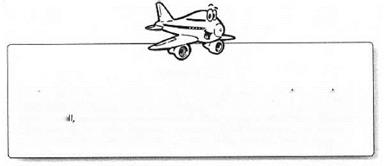The Glider’s ”Engine“
Glider designers may have dispensed with the engine, but that doesn’t mean gliders fly without power. T rue, gliders don’t carry their own powerplant with them, like an airplane. Still, they do use energy to get aloft, and they use energy to stay aloft as long as possible. It’s just that the power comes from somewhere else—the atmosphere. Gliders are designed with so much lift and so little drag that they are perfectly suited to absorb energy from the atmosphere in the form of heat and wind.
Thermal Power
|
On Course You might have a tabletop thermal generator up in the attic or in your kids’ rooms—the lava lamp. Lava lamps work on the same principle as thermals, from the heating of a fluid, to the rising current, to the eventual cooling and sinking. Just as the light bulb in a lava lamp powers the lamp’s fluid currents, the sun powers the earth’s thermal activity. |
As we’ll see in Chapter 17, ’’Talking About the Weather,“ the sun is the driving power behind virtually every force in the atmosphere. One of the forces powered by the sun is the daily cycle of thermals. Each day, the sun’s heat warms the air near the ground, decreasing its density and causing it to lift in giant globules of hot air called ”thermals.“ Once a thermal breaks free from the ground, it bubbles upwards at a rate of thousands of feet per minute.
Thermals form most readily on southward-facing slopes and in light winds. Glider pilots know what kind of terrain is most likely to spawn thermals and are sensitive to the telltale signs of them. When a pilot flies into one, she’ll feel a gentle—or a not-so-gentle—”kick in the pants,“ a mild shudder followed by a slight sensation of heaviness.
The shudder is the first jolt of upward-moving air striking the bottom of the fuselage and wings. A particularly high-powered thermal can give the glider a solid jolt, which is followed right away by upward acceleration. The acceleration makes the pilot begin to feel slightly heavier.
Sometimes a pilot will feel one wing rise slightly more than the other, a sure signal of which direction to turn in order to stay within the rising packet of air. As soon as she feels the thump of the thermal, the pilot banks steeply into a turn, and continues to
 circle as long as the lift continues. Once a thermal peters out, the pilot comes out of the turn and starts seeking another thermal.
circle as long as the lift continues. Once a thermal peters out, the pilot comes out of the turn and starts seeking another thermal.
Plane Talk
Despite the seeming contradiction, a small family of gliders do carry their own engines.
Motor gliders are particularly popular in Europe, but have a loyal following around the
 lightweight engine allows these gliders to stay in the air longer than they
lightweight engine allows these gliders to stay in the air longer than they
might otherwise be able to. Others even have engines with enough power to take off
 |
and climb to altitude, before the engine is turned off and the pilot glides to earth.
Range currents are the winds that are deflected upward by the slopes of mountain. But their lift comes at a price. In addition to lifting the air and deflecting the wind skyward, mountain ranges can create powerful and complex eddies of wind that glider pilots team to recognize and avoid.
Clouds are reliable signposts for lifting air. Thick, fluffy clouds called cumulus (see Chapter 17 for more on reading the clouds) are created by upward-moving columns of air. An observant glider pilot looks for straight-line cloud streets of cumulus clouds that betray the presence of vertical shafts of air. A welldeveloped cloud street can keep a pilot flying until the sun goes down.












